According to the Bible, Adam and Eve were expelled from Eden to tread the world for eating the forbidden apple. Some Islamic texts, which came into existence after Islam was born in 610 AD, say that the first place where Adam fell from Eden was Sailan (Ceylon & modern day Sri Lanka). Adam then left the island by walking through the naturally built shallow strip of land and reached India. The British looters, who were mainly followers of Christianity and claim that they have made the Indians civilized, coined the term Adam’s Bridge (because Adam is both revered in Islam and Christianity) in 1804- a desperate attempt to name anything and everything based upon their religious beliefs.
Majority of the Indians revere the land bridge as Ram Setu- built by Prabhu Ram and his Vanara Sena (army of the Great Apes) on his journey to Lanka to defeat the tyrant demon king Ravana and rescue his beloved wife Mata Sita. The legend says that Ram used floating stones to build the bridge. This Hindu belief was often ridiculed even though floating stones are found in Rameswaram, which has a scientific reason– air bubble trapped inside the rocks. One such stones is Pumice.
Many theorists claimed that Ram Setu is a 30 km long naturally made lime stone shoals that runs from Pamban Island near Rameswaram to Mannar Island off the coast of Sri Lanka. The eminent intellectuals, secular politicians and leftist humanitarians, all dismissed the idea that Lord Ram existed and built any bridge over the roaring waves of the Southern Sea. To them, Ram is just a fictional Aryan character and ancient Indians were a bunch of uncivilized buffoons who couldn’t even think of building a civilization lest a bridge across the sea.
All this contempt against Hindu beliefs faced a severe setback when the Science Channel owned by the Discovery TV communications aired a promo of a show called “What on Earth”. The promo specifically showed a video from an episode called Ancient Land Bridge. The promo used NASA’s satellite images taken in 2002 and made amazing revelation- Ram Setu is manmade and not a whim of nature! Satellite imagery shows land formations, which the scientists always believed as lime stone shoals. However, the narrator in the promo says- “The sand bar may be natural but what is sitting on top of it is not”.
The promo of the show claimed- “Are the ancient Hindu myths of a land bridge connecting India and Sri Lanka true? Scientific analysis suggests they are”.
The promo says that the rocks are 7,000 years old and the sand bar is only 4,000 years old. The video explains that studies suggest the structure in the satellite image is not natural, but built by humans. The video says that building such a big bridge on the sea at that time of history would have been a superhuman achievement. Chelsea Rose, historical archaeologist and adjunct faculty member at the Southern Oregon University said- “The rocks on top of the sand actually pre-date the sand. So there’s more to the story”. According to Geologist Alan Lester, “There are stones that have been brought from afar and set on top of our sand bar island chain”.
This video has brought new life to the millions of Ram followers and it was no surprise that Minister of Broadcasting and Information Smriti Irani retweeted the video with a chant of Jai Shri Ram.
The tweet by Smriti Irani drew huge support and some questions too. A user named Sandeep Singh questioned the stances of Archaeological Survey Of India by tweeting- “Jai Sri Ram….but what was ASI doing? This could have been done by us rather than science channel telling us. But no even after 2014 leftist thugs will still rule academics, ncert, history”.
This is a genuine question. In March 2017, Indian Council of Historical Research (ICHR) assured that it would conduct an underwater exploration study to find out the nature of Ram Setu. ICHR Chairman Y. Sudershan Rao had said that no underwater exploration had been done till date (March 2017) to find out whether Ram Setu is a myth or artificial phenomenon. A theoretical training under a pilot project was scheduled to begin in May and exploration was scheduled to start in October. It was decided that former Archeological Survey of India (ASI) Director Alok Tripathi would head the project for underwater exploration. ICHR was to take help from maritime experts from ASI and other maritime institutes. A report was due by November, but Alok Tripathy said that the work is yet to begin and that some formalities are pending which is halting the start of the fieldwork.
With the release of the promo, BJP strongly attacked the self-proclaimed secular party Congress. Law Minister Ravi Shankar Prasad said that Ram Setu is India’s heritage and it should not be tampered. He lashed out at Congress and demanded explanation from the party for filing an affidavit in front of Supreme Court in 2008 regarding Ram Setu. In the 2008 affidavit, the party said that it had doubt on existence of Ramayana, Lord Ram and their link with Ram Setu. During the UPA rule in 2005, the government approved the multi-million dollar Sethusamudram Shipping Cannal Project to create a ship channel across the Palk Strait by dredging the shallow ocean floor at Dhanushkodi. The Project was believed to cut off the voyage around Sri Lanka. The ships could save 30 hour of journey by passing through the shipping channel to travel from Bay of Bengal to Indian Ocean and vice versa. In 2007, ASI and UPA govt. informed the Supreme Court in an affidavit that there is no proof that Ram ever existed and he built the bridge.
Hindu outfits and political parties like BJP, strongly protested against the project claiming that it would hurt Hindu sentiments. The UPA played a dirty trick and modified the affidavit by saying that Ram indeed built the bridge and later destroyed it himself when his task was over. By saying this, they tried to convey that the current structure called Ram Setu is not the original Ram Setu and hence, it can be destroyed. Dr. Subramanian Swamy fought legal battle and brought the stay on the demolition of Ram Setu when the past impotent government almost planted explosives on it in 2008. Recently, in 2015, Dr. Swamy told the SC that cabinet of Modi govt. has decided not to touch Ram Setu for any project. On Nov 22 2017, GoI decided not to carry on the original Sethusamdram Shipping Channel Project that could hamper the Ram Setu.
When BJP attacked Congress after the release of the promo, the Congress party saw that it could hamper them in the ongoing Gujarat assembly election. The clever party made a sharp U-turn and leader Rajiv Shukla said that Congress believed in Ram Setu from “time to time”. Little did they realize that the statement meant only one thing- even after believing Lord Ram, the party intentionally tried to destroy the bridge, which is indeed an anti-Hindu attitude.
There are various literatures and historical records, which suggest the existence of Ram Setu:-
• Paranthaka Chola of the tenth century copper plates and the copper plates indicate that Aparajitavarman went to Sethutirtha.
• “Krishnadevaraya’s epigraph mentions that his territory extended from Sethu to Vijayanagaram.”
• A Dutch cartographer prepared a map called Malabar Bowen Map in 1747 showed this area as Ramancoil, a colloquial form of Tamil phrase Raman Kovil (Rama’s temple). The map is available at Thanjavur Saraswati Mahal Library.
• In the same library, there is another map from Mughal India prepared by J. Rennel in 1788. The region is mentioned as “the area of Ram Temple”.
• Schwartz’s historical atlases and Marco Polo’s travel texts call this region by various names like Sethubandha and Sethubandha Rameswaram. There are various literatures, which mention about Ram Setu.
• In his work “Books of Roads and Kingdoms” Ibn Khordabeh made references to Ram Setu by calling it Set Bandhai.
People say that Taj Mahal is the symbol of love. But a man and his followers built a bridge across the raging sea some 7000 years ago to rescue his wife. For me, that is the true symbol of love. Spiritually and emotionally, Ram Setu is no less than a World Heritage Site.
By:Saswat Routroy Source:Rightlog.in

![]()
Readers like you, make ESHADOOT work possible. We need your support to deliver quality and positive news about India and Indian diaspora - and to keep it open for everyone. Your support is essential to continue our efforts. Every contribution, however big or small, is so valuable for our future.

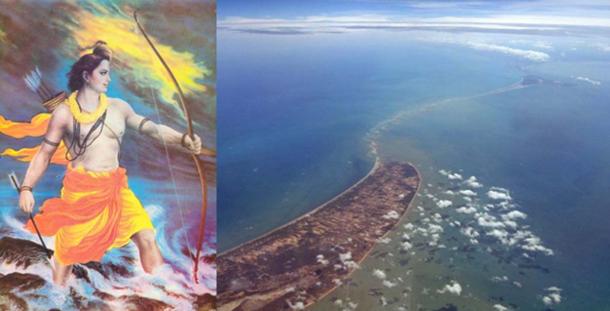


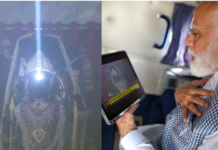

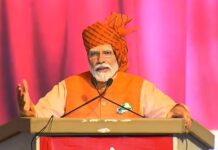
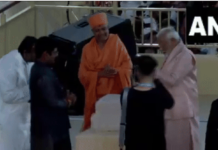
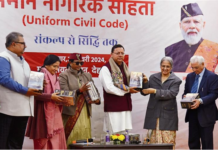




Fantastic research